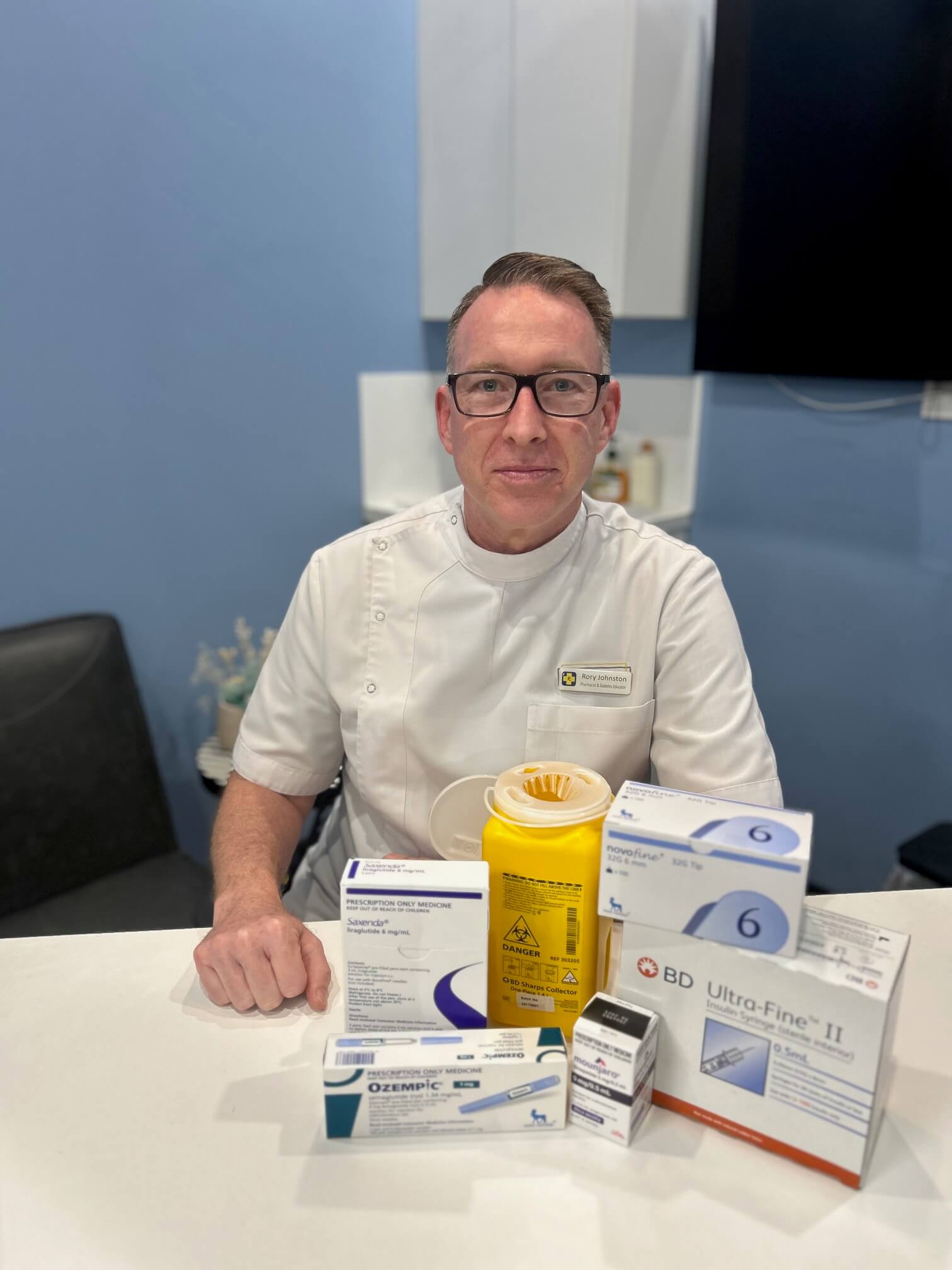Many patients with chronic obstructive pulmonary disease (COPD) remained strictly housebound during recent lockdowns, impacting the management of their condition. But this World COPD Day (17 November), pharmacists can help patients strengthen their lungs, and resolve.
Lachlan Rose MPS, a northern Sydney-based community pharmacist and PSA NSW Branch Committee member, has seen first hand the impact prolonged lockdowns in New South Wales had on patients with COPD.
‘Some patients remained in almost hard isolation for months on end to avoid any risk of infection,’ Mr Rose said. ‘But this affected COPD management due to the lack of direct monitoring by GPs or pharmacists.’
One patient, for example, refused to leave the house despite a COPD check being required.
‘[But] we arranged a home medicines review (HMR) … and he agreed to the pharmacist coming in full PPE,’ Mr Rose said.
Pharmacists have long played an integral role in the management of COPD, including screening, education, monitoring and referral.
But this role has only increased in significance throughout the pandemic, with patients living with chronic conditions like COPD facing reduced access to services.
‘Symptom control is difficult to assess over the phone and is often [dependent] on patients’ self-assessment,’ Mr Rose told Australian Pharmacist.
‘[But] pharmacists were still seeing patients, [making] our assessment of patients’ COPD symptoms even more crucial.’
COPD resources:
|
This year’s World COPD Day theme is ‘Healthy Lungs – Never More Important’, so pharmacists should take the opportunity to ramp up their efforts in screening and educating.
‘The screening process could be as simple as identifying patients with recurrent chest symptoms such as coughing, mucous production or breathlessness, or those who smoke,’ he said.
‘Our focus on education could revolve around optimising inhaler technique and treatment expectations.’
Identifying COPD and assessing symptoms
It’s crucial for pharmacists to be on the lookout for identifying clues of COPD, Mr Rose said.
‘Does the person smoke? Do they cough often? Do they produce mucous most days? Are short-acting bronchodilators not effective?’ he asked.
Pharmacists should also look out for patients who come into the pharmacy to discuss smoking cessation, ask for nicotine vaping products, or request cough suppressants, said Debbie Rigby FPS, accredited pharmacist and Pharmacist Member, COPD Clinical Advisory Committee of the Lung Foundation Australia.
Some tools to assist in the screening process are the Piko-6 and COPD-6 devices.
For symptom assessment, Ms Rigby recommends the COPD Assessment Test (CAT), comprising a series of eight patient-rated questions on a 0–5 scale.
‘[For example], can [they] walk up a flight of steps without being breathless? Are they limited doing activities around the home? Are they confident leaving home? What’s their sleep like and how much energy do they have?’ Ms Rigby said.
This allows pharmacists to detect any improvements, declines or if patients are using their medicines correctly.
The short form only takes 2–3 minutes to complete, so patients could fill it out while waiting for their medicines to be dispensed.
‘And certainly when you’re doing a medication review,’ Ms Rigby added.
Once the patient has filled in the form, it can be scanned to their file and forwarded to their GP.
Medicine adherence and inhaler technique
Pharmacists should emphasise the importance of adherence to inhaled medicines such as dry powder inhalers (DPIs) and metered dose inhalers (MDIs). Adherence not only reduces symptom severity, it also minimises the risk of exacerbations and hospital admissions, whether emergency department presentations or hospital stays due to exacerbations.
Assessing patients’ inhaler technique is another essential component of COPD monitoring for both community pharmacists and accredited pharmacists doing medicine reviews, Ms Rigby said.
This should be done at every opportunity, she emphasised, including when dispensing monthly medicines and during HMRs.
‘Inhaler technique is less like riding a bike, but more like playing the piano – the skill level can drop off without regular tuition,’ Mr Rose said.
‘[Patients] might forget a step, or they’re not putting as much effort into it,’ Ms Rigby added.
The efficacy of DPIs depends on the inspiratory flow rate and requires immediate quick and deep inhalation.
With MDIs, or soft-mist inhalers such as Respimat, inhalation needs to be slow and steady over 4–5 seconds, Ms Rigby said.
To help patients maintain their technique, pharmacists can direct them to videos and information sheets on the Lung Foundation website.
‘I always print them out before [providing] HMRs for people with COPD,’ Ms Rigby said. ‘If they’re not doing one or two steps as well as they should, I’ll highlight them.’
COPD management tips for pharmacists
The salbutamol (Ventolin) shortage during the pandemic had the potential to affect a lot of patients with COPD, Mr Rose said.
To ensure patients would not be without their COPD treatment, Mr Rose’s pharmacy quarantined stock of certain medicines.
‘[We] have generally increased our stock holdings of certain medicines to mitigate any short-term stock disruptions,’ he said.
It’s also key for pharmacists to support patients’ efforts to quit smoking and emphasise the importance of vaccination, Mr Rose said.
‘Now that pharmacists are well regarded in the vaccination space, we can remind patients about the importance of COVID-19, influenza and pneumococcal immunisation,’ he said.
Pharmacists also need to consider common comorbidities of COPD, such as anxiety and depression, which can be self-perpetuating.
‘Not being able to breathe causes anxiety, and anxiety can worsen breathlessness,’ Ms Rigby said. ‘So pharmacists need to have a really good [understanding] of patient history.’
This is where HMRs are particularly valuable, allowing patients to open up about their symptoms in the privacy of their home.
Pharmacists can ask patients if they have a morning cough, which is an indicator of mild COPD, or about their mucus, sputum and phlegm.
‘I always ask the partner because they hear the person cough,’ she said. ‘Many people say “I don’t cough” and the partner says, “You cough all day”.’
It’s also important to inquire about the other medicines patients take, which they may use to self-medicate, such as antihistamines or over-the-counter salbutamol.
‘They could be overusing salbutamol inhalers,’ Ms Rigby said. ‘And long term, over-reliance can actually worsen lung function and create airway hypersensitivity, so you react to triggers more profoundly.’
COPD patient resources
The most effective management strategy for people with COPD is pulmonary rehabilitation, which teaches people how to live with COPD, including breathing techniques and exercises, Ms Rigby said.
It is typically run in hospitals, with allied health professionals such as physiotherapists, or by community health providers.
While face-to face treatment is more effective, the Lung Foundation has online pulmonary rehab modules, to which pharmacists can refer patients.
Patients can use the ‘Find a pulmonary rehabilitation’ function to locate the services closest to their postcode.
‘They’ve [also] got some great stories and videos of patients talking about their experience of living with COPD,’ Ms Rigby said.
‘That helps patients to understand what’s going on in their lungs and the self-management strategies they can [use] to have the best quality of life.’
PSA members are encouraged to connect with the Respiratory Care Community of Special Interest group for advice. For a clinical deep dive into COPD, pharmacists can complete the Chronic Obstructive Pulmonary Disease – Essential CPE, released with the November issue of Australian Pharmacist.



 Source: Queensland Health Immunisation Program[/caption]
Source: Queensland Health Immunisation Program[/caption]


 Dr Sarah White[/caption]
Dr Sarah White[/caption]


 Rory Johnston MPS[/caption]
There is often a perception that people are simply overweight due to overeating, said Mr Johnston, but there are myriad conditions and medicine classes that can cause patients to gain weight, including:
Rory Johnston MPS[/caption]
There is often a perception that people are simply overweight due to overeating, said Mr Johnston, but there are myriad conditions and medicine classes that can cause patients to gain weight, including:







